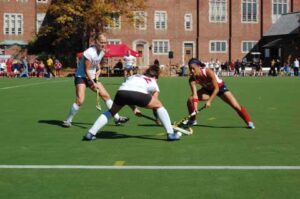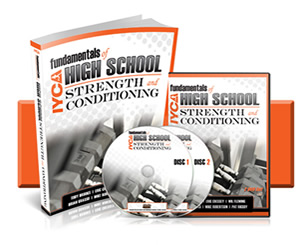Hip Pain in Athletes: The Origin of Femoroacetabular Impingement?
Over the weekend, I attended my third Postural Restoration Institute seminar, Impingement and Instability. I’ve written previously about how this school of thought has profoundly impacted the way that we handle many of our athletes – and this past weekend was certainly no exception. This weekend was also my first chance to meet and learn directly from Ron Hruska, the man initially responsible for bringing many of these great ideas to light.
While I am admittedly still processing all the awesome information from the weekend, I wanted to write today about one big “Ah-Ha” moment for me over the weekend. At some point on Day 2, Ron said something to the effect of (paraphrased):
“A superior acetabulum isn’t much different than an acromion on a scapula.”
My jaw practically hit the floor. I joked with the seminar organizer that I needed to go into the restroom to yell at myself for a few minutes for not thinking of this sooner. Let me explain…
Over the past few years, there has been a huge rise in hip injuries in athletes (I’d even written about it HERE in response to a New York Times article about number of hip injuries in baseball). Sports hernias, labral tears, and femoroacetabular impingement (FAI) are commonplace findings on the health histories that I see every day on first-time evaluations. In terms of FAI, you can have bony overgrowth of the femoral head (cam), acetabulum (pincer), or both (mixed), as the graphic from Lavigne et al. below demonstrates:
Many folks say that we’re getting better diagnostically and that’s why the prevalence has increased in recent years. Let’s be real, though, folks: if we’d had hip pain and dysfunction on this level for decades, don’t you think anecdotal evidence would have at least tipped us off? I find it hard that generations of athletes would have just rubbed some dirt on a painful hip, cowboyed up, and put up with it.
Consider those over the age of 60, though. Sher et al. reported that a whopping 54% of asymptomatic shoulders in this population have rotator cuff tears; that doesn’t even include those who actually have pain! Why does this happen? They impinge over and over again on the undersurfaced of the acromion process secondary to poor thoracic positioning, scapular stabilization, breathing patterns, and rotator cuff function. The end result is reactive changes on the acromion process that lay down more and more bone as the years go on. And, an anteriorly tilted scapula kicks that impingement up a notch. The “early” cuff irritation likely comes in those with Type 3 (beak-shaped) acromions, whereas the Type 1 (flat) and Type 2 (hook) acromions need time to lay down more and more bone for their anterior tilt to bring them to threshold.
Conversely, consider femoroacetabular impingement of the hip. You can get bony overgrowth of the acetabulum, femoral head, or both. It’s widely debated whether those with FAI are born with it, or whether it becomes part of normal development in some kids. Well, I guess it would depend on whether you consider playing one sport to excess year-round “normal.”
You know what? I’d estimate that over 90% of the femoroacetabular impingement cases I’ve seen have come in hockey, soccer, and baseball players. What do these sports have in common? They all live in anterior pelvic tilt – with hockey being the absolute worst. Is it any surprise that the incidence of FAI and associated hip issues has increased dramatically since the AAU generation rolled in and kids played the same sport all 12 months of the year?
Conversely, I’ve never seen a case of FAI in a field hockey player. Additionally, when I just asked my wife (who rowed competitively in college) if she ever saw any hip issues in her teammates in years of rowing, she joked that there weren’t any until they added distance running to their training. Field hockey players and rowers live in flexion (probably one reason why they have far more disc issues). And, taking it a step further, I’ve never seen an athlete with FAI whose symptoms didn’t improve by getting into a bit more posterior pelvic tilt.
Finally, a 2009 study by Allen et al. demonstrated that in 78% of cases of cam impingement symptoms in one hip, the cam-type femoroacetabular impingement was bilateral (they also found pincer-type FAI on the opposite side in 42% of cases). If this was just some “chance” occurrence, I find it hard to believe that it would occur bilaterally in such a high percentage of cases. Excessive anterior pelvic tilt (sagittal plane) would be, in my eyes, what seems to bring it about the most quickly, and problems in the frontal and transverse planes are likely to blame for why one side presents with symptoms before the other.
People have tried to blame the increased incidence of hip injuries on resistance training. My personal opinion is that you can’t blame resistance training for the incidence, but rather the rate at which these issues reach threshold. Quality resistance training could certainly provide the variety necessary to prevent these reactive changes from occurring at a young age, or by creating a more ideal pelvic alignment to avoid a FAI hip from reaching threshold.
Conversely, a “clean-squat-bench” program is a recipe for living in anterior tilt – and squatting someone with a FAI is like overhead pressing someone with a full-thickness cuff tear; things get ugly quickly.
Honestly, this probably isn’t revolutionary for folks out there – particularly in the medical field – who have watched the prevalence of femoroacetabular impingement rise exponentially in recent years, but Ron made a great point to reaffirm a thought I’d been having for years and strengthened the argument. And, more important than the simple “Ah-Ha” that comes with this perspective is the realization that an entire generation of young athletes have been so mismanaged that we’ve actually created a new classification of developmental problems and pathologies: femoroacetabular impingement, labral tears, and sports hernias.
Thanks, Ron, for getting me thinking!
For more information on appropriately managing kids during these critical development time periods, check out the International Youth Conditioning Association’s High School Strength and Conditioning Certification, which I helped to write.







